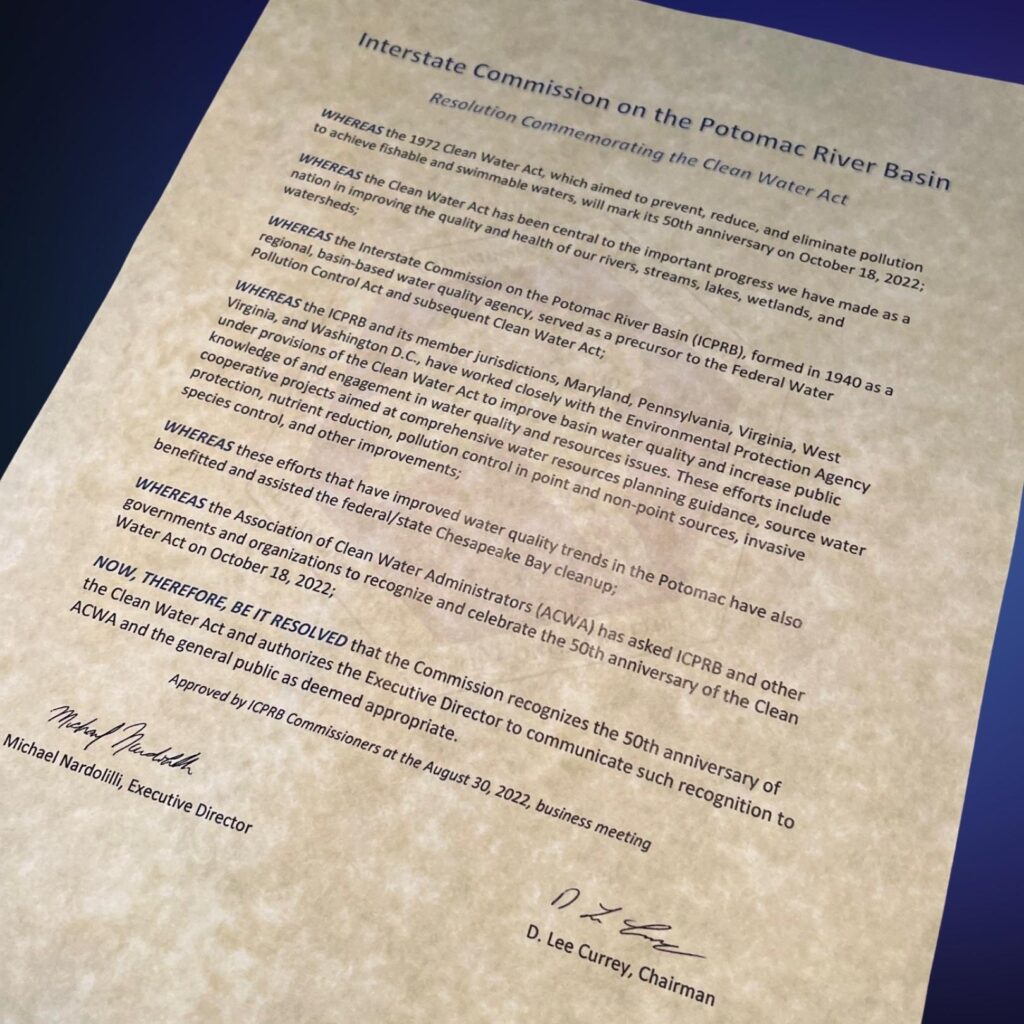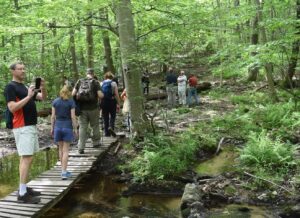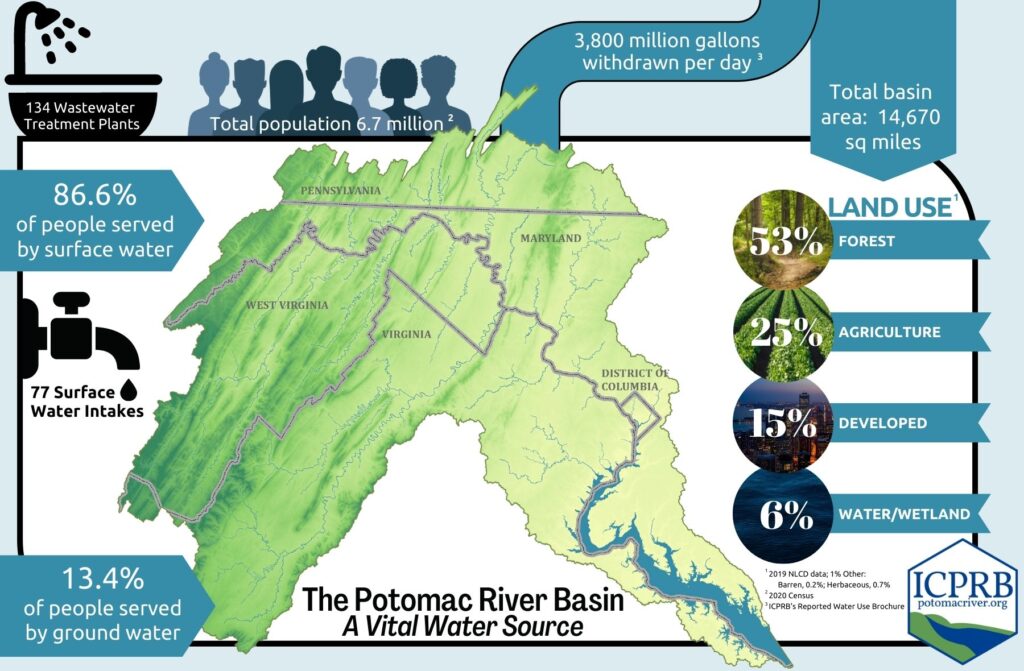NEWS RELEASE
FOR IMMEDIATE RELEASE
September 27, 2022
We help protect your drinking water – and you can, too.
If the majority of Americans don’t know where their water comes from, how can they protect it?
According to a 2007 EnviroMedia study, only 32 percent of Americans know the source of their drinking water. A 2017 Gallup Poll indicates that 63 percent of Americans worry “a great deal” about pollution in their drinking water, and 57 percent worry about pollution in rivers, lakes, and reservoirs.
“The Potomac River supplies 78 percent of the drinking water for the more than 5.1 million people who live and work in the DC Metro area – not to mention the countless daily visitors,” said Michael Nardolilli, Executive Director of the Interstate Commission on the Potomac River Basin (ICPRB).
During Source Water Protection Week, from Sept. 25 – Oct. 1, ICPRB will join water organizations from across the nation to share information about protecting sources of drinking water and simple steps everyone can take to make a difference, Nardolilli said.
What is Source Water Protection? The U.S. Environmental Protection Agency (EPA) defines source water as “sources of water (such as rivers, streams, lakes, reservoirs, springs, and groundwater) that provide water to public drinking water supplies and private wells.”
“Source water supplies raw, unfiltered water to water treatment plants. Source water protection is the proactive action taken to safeguard the water before it reaches the plant,” said Christina Davis, Senior Water Resources Planner at ICPRB.
According to Davis, clean water at the source reduces public health risks and controls costs at the water treatment plant. Safe drinking water coming from the water treatment plant to the tap protects infrastructure, appliances, and most importantly, human health. And it’s not just humans who benefit. The animals and plants that live in–and alongside–our waterways also benefit from cleaner source water.
Additionally, source water protection is an environmental justice issue, according to the United Nations. The organization declared access to clean drinking water as a human right, yet low-income and minority communities are more likely to suffer from the impacts of polluted streams, rivers, and reservoirs.
“During Source Water Protection Week, water suppliers, government agencies, and nonprofit organizations will be sharing information on what is being done in the Potomac basin and what we all can do to Protect the Source. We look forward to celebrating source water protection throughout the week, and we encourage basin residents to do the same. They can start by learning more about their local water source through their water utility’s Annual Water Quality Report,” said Davis.
The EPA provides access to Annual Water Quality Reports for community water systems across the nation on their Consumer Confidence Report website.
Davis shared activities everyone can do to protect drinking water sources:
- Limit the amount of deicing salts used in the winter;
- Pickup dog waste;
- Properly dispose of medications;
- The Simple Actions we all can do to Make a Difference leaflet lists actions for individuals, children, homeowners, non-profit/businesses, agriculture, and government agencies, to protect sources of drinking water.
Perhaps most important, Davis notes, is to get outside and enjoy the recreational opportunities our rivers, streams, and lakes provide. Stewardship grows from knowing and appreciating our natural resources.
Nardolilli says source water protection takes many forms, “For example, ICPRB works with organizations like the Potomac River Basin Drinking Water Source Protection Partnership (DWSPP), a coalition of water suppliers and government agencies who work together on source water protection issues. The DWSPP recently completed a Land Prioritization Mapping Project that aims to assist land conservation organizations in prioritizing specific parcels of land in the Potomac River basin to obtain the most drinking water quality benefits.”
Join the conversation on social media by following #protectthesource and #protectthepotomac.
CONTACT
Renee Bourassa Interstate | Commission on the Potomac River Basin| rbourassa@icprb.org | 301.417.4371

Click here for a PDF version of this announcement.
 WHEREAS the 1972 Clean Water Act, which aimed to prevent, reduce, and eliminate pollution to achieve fishable and swimmable waters, will mark its 50th anniversary on October 18, 2022;
WHEREAS the 1972 Clean Water Act, which aimed to prevent, reduce, and eliminate pollution to achieve fishable and swimmable waters, will mark its 50th anniversary on October 18, 2022;


